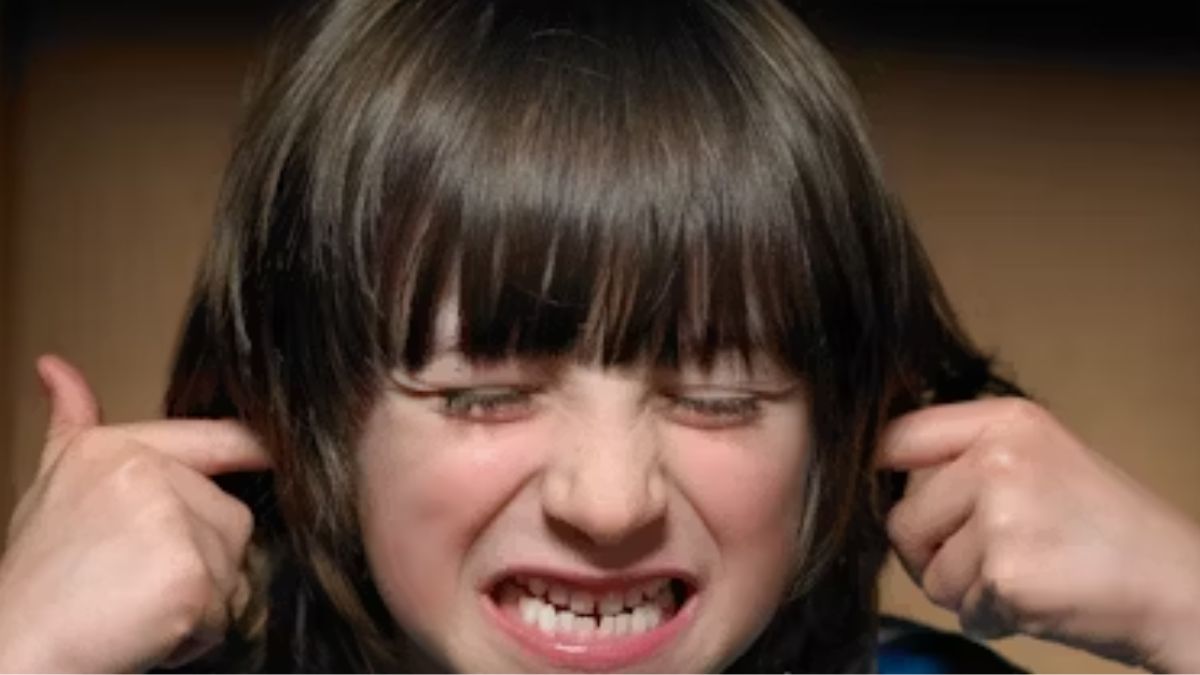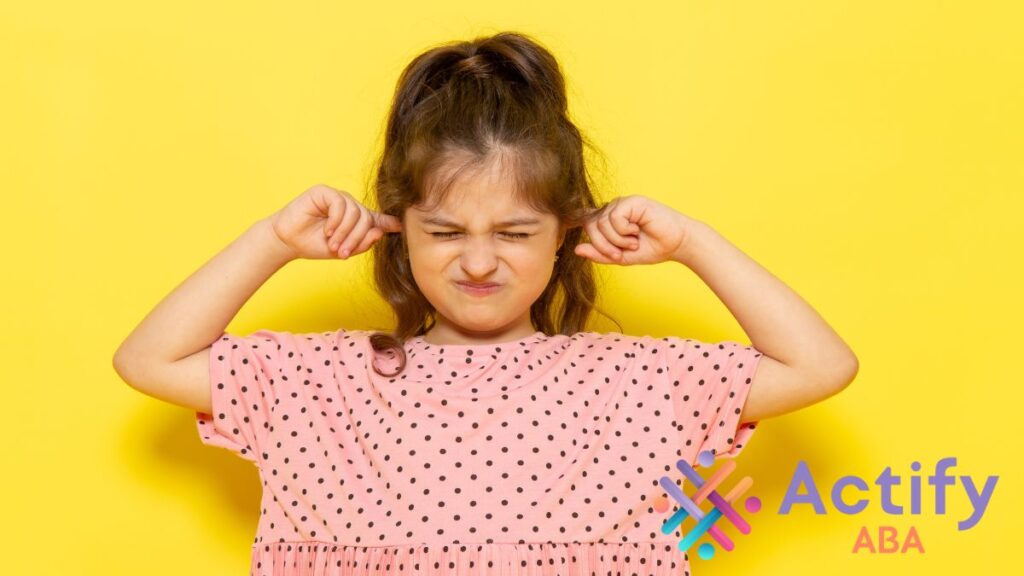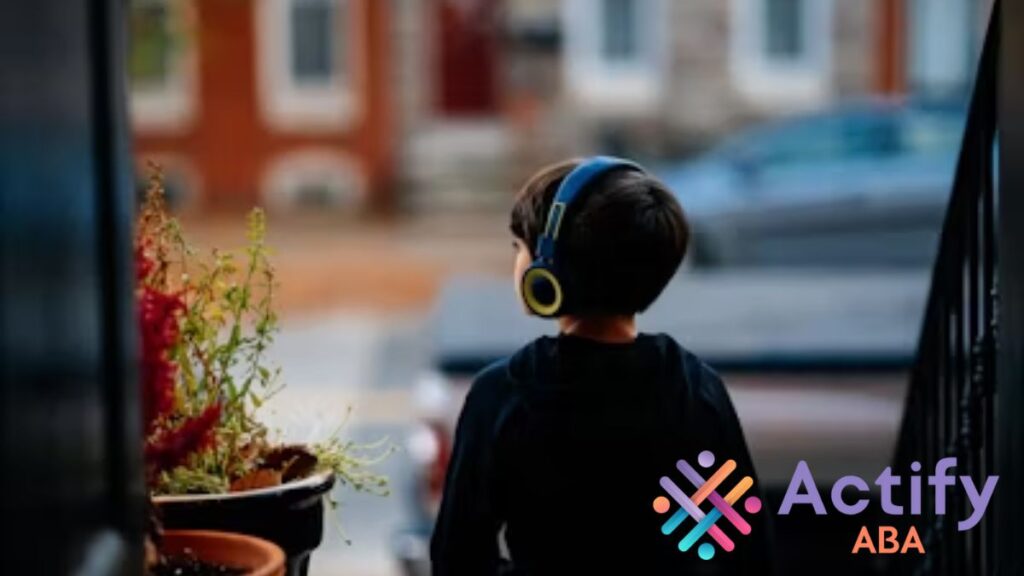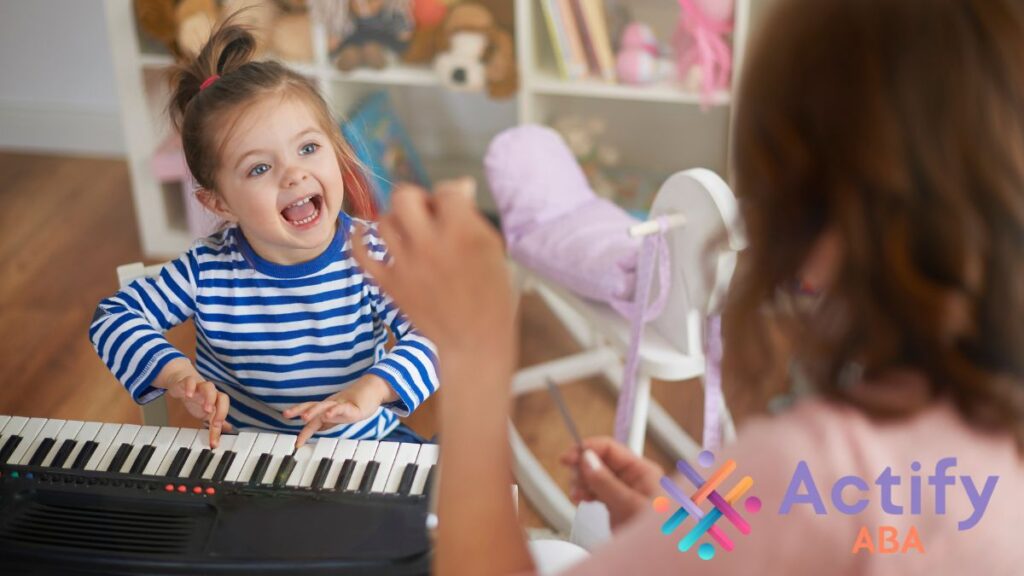
Key Points:
- Sound sensitivity is common in autism, affecting up to 70% of children who may find everyday noises overwhelming or distressing.
- Personalized ABA and sensory therapies, like occupational and auditory integration therapy, can help children build coping skills and confidence.
- With empathy, preparation, and structured support, families can transform noise-related challenges into opportunities for growth and comfort.
Imagine walking into a room where every sound feels louder than it should. The vacuum roars like a jet. The microwave beep cuts through your thoughts. For many autistic children, this is a daily reality. Sound sensitivity and autism often go together, shaping how a child experiences the world.
Some autistic individuals feel overwhelmed by noises most people barely notice. But why does this happen? How can parents and teachers help without making kids feel limited? Let’s explore what causes sound sensitivity, how it affects daily life, and simple ways to support children who experience it.
What Are Sound Sensitivities?

Sound sensitivities involve unusual reactions to sounds that others might consider normal. These reactions can be over-responsiveness or under-responsiveness.
- Hyperacusis: Everyday sounds feel painfully loud.
- Misophonia: Certain sounds, like chewing or tapping, trigger strong emotional responses.
Autistic individuals may experience both extremes. For example, one child might flinch at a fire alarm, while another may seem unaware when someone calls their name. Sometimes, children actively seek out sound, enjoying patterns or rhythms that calm them.
Table 1: Examples of Sound Sensitivities in Autism
| Sensitivity Type | Typical Triggers | Common Response |
| Hyperacusis | Vacuums, alarms, fireworks | Covers ears, melts down, avoids noise |
| Misophonia | Chewing, pen clicking | Irritation, anxiety, anger |
| Phonophobia | Sudden high-pitched sounds | Freezing, withdrawal, avoidance |
Why Do Autistic Children Experience Sound Sensitivities?
The root lies in how the brain processes sensory information. In neurotypical brains, sounds are filtered and interpreted efficiently. In autistic brains, this filtering may be diminished or overactive.
- Sensory signals may feel too intense, causing overload.
- Environmental noise can trigger stress, anxiety, or meltdowns.
- Genetic and neural differences can amplify reactions. For example, mutations in the CNTN5 and CNTN6 genes can affect auditory processing, making everyday sounds overwhelming.
Studies show that up to 70% of autistic individuals experience heightened sound sensitivity, compared to 8% of the general population. Research at MIT and Brown University even identified circuits in the somatosensory cortex that may explain why some children respond intensely to noises that others hardly notice.
Common Signs Your Child May Have Sound Sensitivities
Identifying sound sensitivities early helps create supportive environments. Watch for behavioral cues:
- Covering ears or turning away from noise.
- Avoiding loud or crowded places.
- Complaining about everyday sounds, like appliances or electronics.
- Being easily startled by alarms, sirens, or slamming doors.
- Showing frustration or withdrawing during noisy events.
Example:
One child might enjoy the quiet of a library but become extremely upset in a busy restaurant. Another might tolerate low-level background noise but panic at high-pitched electronic beeps.
How Sound Sensitivities Affect Daily Life
Sound sensitivity can touch every aspect of life—from home to school and public spaces.
Challenges at Home
- Appliances like vacuum cleaners or blenders may trigger distress.
- Daily routines can become stressful if noise levels are unpredictable.
- Children may avoid certain areas or activities, limiting engagement.
Challenges at School
- Classrooms can be overwhelming with multiple voices and background noises.
- Playground sounds, bells, and announcements may disrupt focus.
- Anxiety may increase, impacting participation in lessons.
Emotional and Behavioral Impact
| Effect | Example |
| Anxiety | Worry about unexpected loud sounds. |
| Frustration | Irritation triggered by repetitive noises. |
| Social Withdrawal | Avoidance of noisy events. |
| Meltdowns | Behavioral response to overwhelming stimuli. |
Coping Strategies and Management Techniques

Managing sound sensitivities involves both prevention and gradual adaptation.
- Quiet Spaces: Designate areas at home or school for retreat.
- Noise-Canceling Headphones: Portable and effective in noisy environments.
- White Noise Machines: Mask trigger sounds and provide calm.
- Preparation: Alert the child before loud activities, like vacuuming.
Gradual Desensitization
Controlled exposure to mild sounds can help children tolerate noise over time. Consulting an occupational therapist or behavior analyst ensures this is done safely.
Environmental Adjustments
- Use rugs or soft furniture to reduce echo.
- Adjust appliance volumes.
- Choose quieter times for outings or shopping.
Therapeutic Approaches for Sound Sensitivities
Several therapies target both emotional and sensory processing:
- Occupational Therapy (OT): Focuses on sensory integration and coping strategies.
- Auditory Integration Therapy (AIT): Uses filtered music to retrain sound response.
- Cognitive Behavioral Therapy (CBT): Helps manage anxiety related to sound triggers.
- Speech Therapy: Supports clear communication when sensitivities make expression difficult.
Each therapy can be tailored to the child’s unique needs, sometimes combining approaches for maximum benefit.
Supporting Emotional Well-being
Emotional support is as important as practical adjustments.
- Validate feelings: “I see this sound is upsetting you.”
- Offer comfort and reassurance during overload.
- Encourage self-expression through words, drawing, or gestures.
- Teach signaling methods to indicate when a child needs a break.
The Science Behind Sound Sensitivity in Autism
Sound sensitivities in autism aren’t just behavioral—they’re rooted in how the brain processes sensory information. Scientific research consistently highlights the neurological basis of these sensitivities, revealing a combination of neural, physiological, and genetic factors that make everyday sounds feel overwhelming or even painful for some autistic individuals.
- Heightened Brain Activity: Brain imaging studies show that children with autism have increased activation in sensory areas such as the auditory cortex and emotional centers like the amygdala when exposed to sounds. This heightened response leads to stronger emotional and physical reactions to noises that others might easily tune out.
- Imbalanced Auditory Gain: The brain may amplify incoming auditory signals—a phenomenon called increased central auditory gain—making normal sounds seem louder and more distressing, which can result in sensory overload.
- Reduced Inhibitory Control: Differences in neural circuitry can limit the brain’s ability to filter out irrelevant sounds, making every noise seem equally prominent and difficult to ignore.
- Altered Habituation: Studies using EEG and skin conductance reveal that autistic individuals often struggle to adapt to repeated noises. Unlike neurotypical individuals, repeated sounds don’t become easier to tolerate, leading to ongoing sensitivity.
- Autonomic Nervous System Response: Heightened physiological responses, such as increased heart rate and skin conductance, often accompany sound exposure. These reactions can intensify discomfort and lead to behaviors like covering ears or seeking quiet spaces.
- Genetic Links: Genetic research has identified variations or mutations in genes such as CNTN5 and CNTN6, which play key roles in neural development and connectivity. These mutations may contribute to atypical auditory processing and increased hypersensitivity.
Together, these neurobiological mechanisms explain why sound sensitivity and autism frequently coexist. Research underscores that these responses are not behavioral but neurobiological, emphasizing the importance of empathy and informed intervention.
Practical Tips for Parents
Here are actionable steps to manage sound sensitivity effectively:
- Be Prepared: Keep noise-canceling headphones and comfort items on hand.
- Plan Ahead: Identify potentially noisy environments and prepare children.
- Advocate: Communicate your child’s needs to educators and family members.
- Educate Others: Help people understand sound sensitivity and its impact.
Misconceptions About Sound Sensitivities
- “They’ll just grow out of it.” Sensitivities may persist, but coping can improve.
- “They’re overreacting.” Reactions are involuntary, rooted in neurological processing.
- “All autistic individuals respond the same way.” Experiences vary; personalized approaches work best.
Long-Term Support Strategies
Supporting sound-sensitive children involves consistent monitoring, adjustments, and skill-building:
- Encourage self-awareness and self-advocacy.
- Integrate therapy recommendations into daily routines.
- Provide opportunities to experience controlled environments with moderate sound exposure.
- Reinforce coping skills through positive experiences.
By focusing on strengths rather than limitations, children can gain confidence and independence despite sensory challenges.
FAQ: Sound Sensitivity and Autism
1. Can sound sensitivity appear later in childhood?
Yes. Some children develop sensitivities after early exposure to specific environments or due to changes in auditory processing.
2. Do all autistic children react to the same sounds?
No. Sensitivity is highly individual. One child may dislike high-pitched beeps, while another reacts to low humming sounds.
3. Can sound sensitivity affect sleep?
Absolutely. Nighttime noises can disrupt sleep patterns, so quiet routines and white noise machines are helpful tools.
4. Are sensory therapies effective long-term?
Many studies show gradual desensitization and occupational therapy improve tolerance and coping skills. Progress may vary by child.
5. How can teachers support students with sound sensitivity?
Visual instructions, designated quiet areas, and flexible seating arrangements can reduce anxiety and enhance focus in classrooms.
Helping Children Thrive Through Understanding and Support

Sound sensitivity in autism is common—but manageable. By understanding triggers, offering emotional support, and building coping tools through Actify ABA, children can navigate their world with more comfort and confidence.
Families in Maryland can benefit from tailored ABA programs that focus on sensory regulation and emotional growth. With ongoing support, kids learn to handle sound challenges while growing independent and resilient.
Empathy opens the door to progress. At Actify ABA, we help families turn everyday hurdles into steps toward success through compassionate, evidence-based care.If your child struggles with sound sensitivity and autism, reach out today. Let’s build a plan that helps your family find calm, balance, and growth—one sound at a time.
